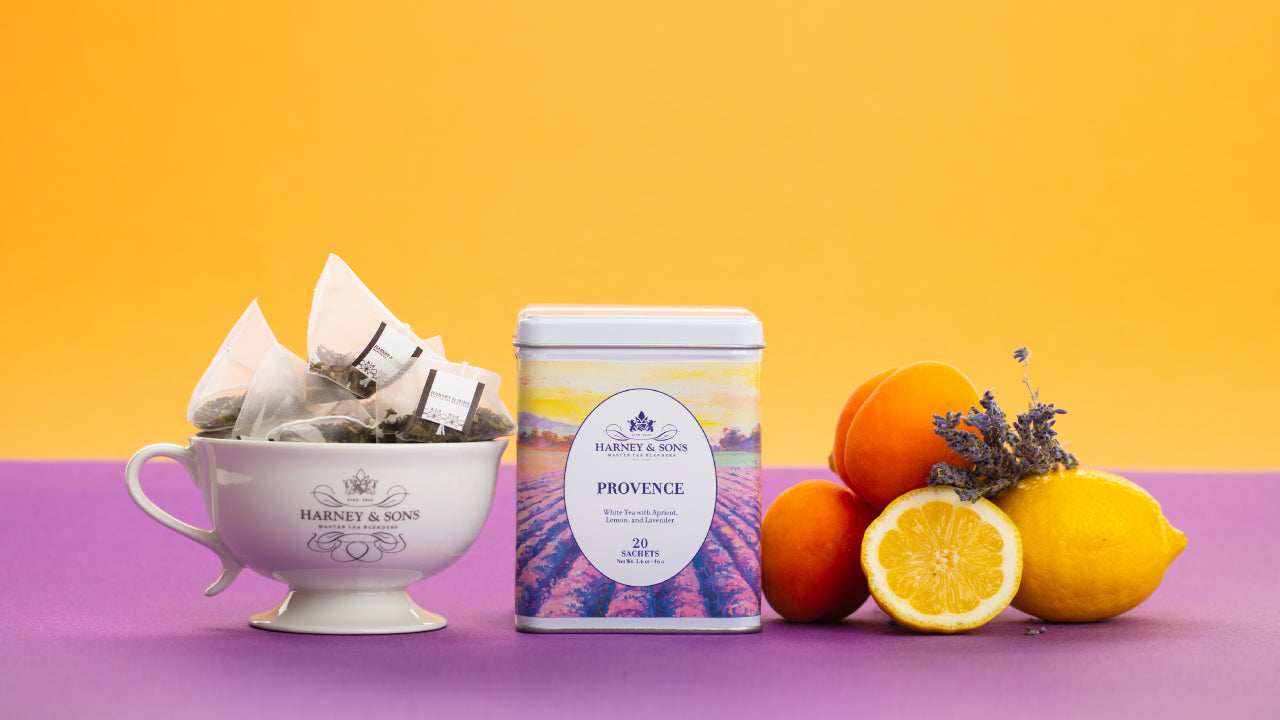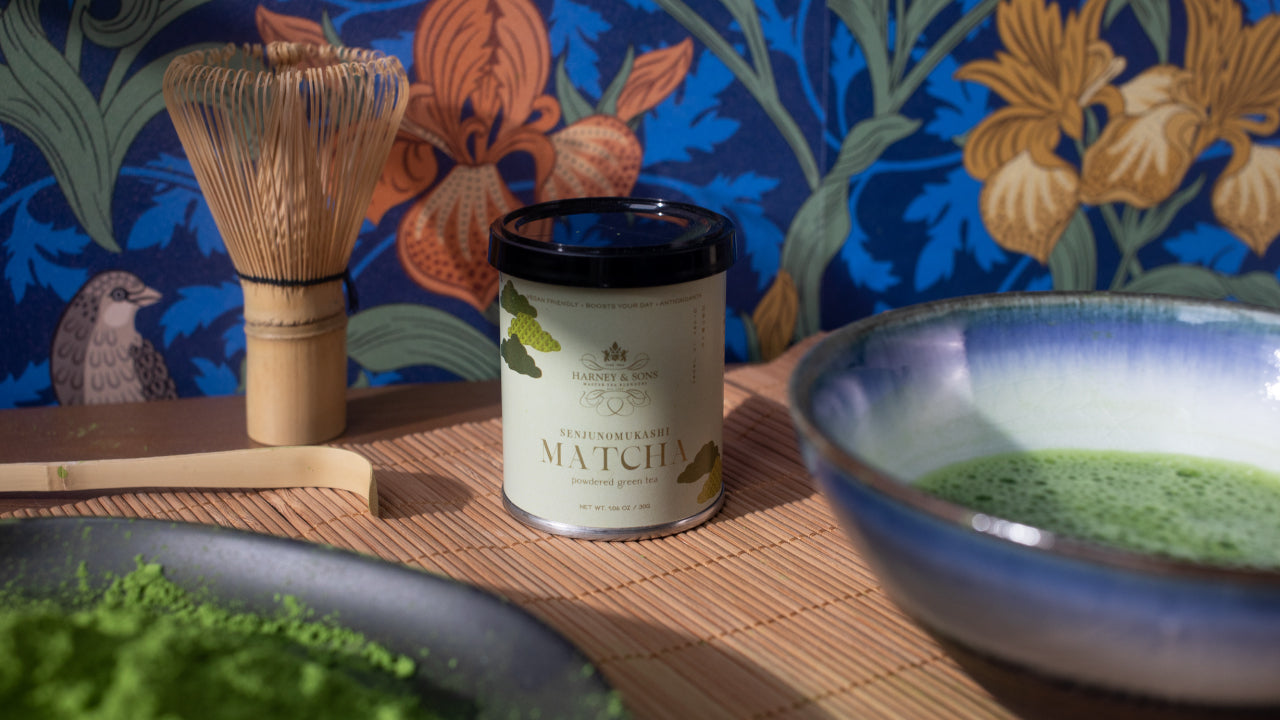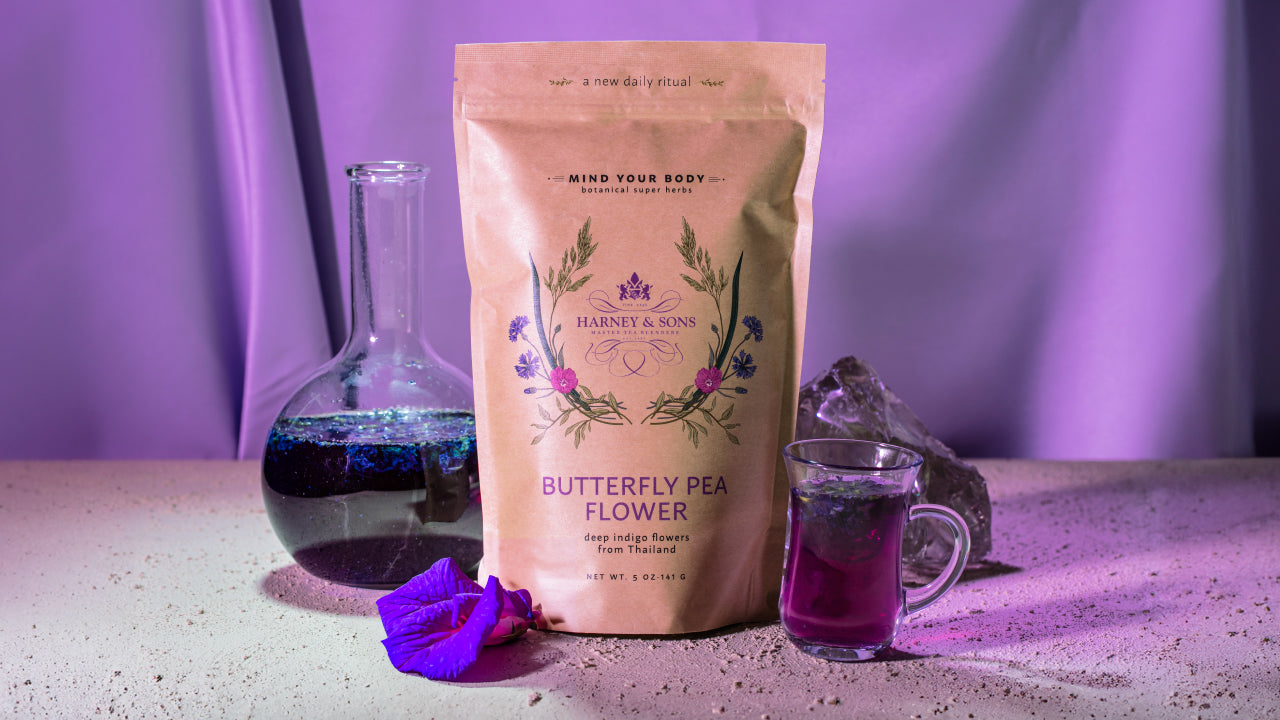When you think of lavender, your first thoughts are probably of its beautiful purple color, its relaxing aroma, and how you’d like to immerse yourself in a tub filled with lavender bath salts. But there’s a lot more to lavender than that, including the use of English lavender (or culinary lavender) in tea. Let’s take a steep look at this amazing herb and its many uses, including in wonderful lavender teas.
Where Does Lavender Come From?
Lavender is native to the mountainous areas of the Mediterranean, where it grows in sunny, stony habitats. Today, lavender can be found growing in southern Europe, Australia, and the U.S. Anyone who has been fortunate enough to see the iconic lavender fields in Provence, France, knows firsthand of their beauty.
The word “lavender” comes from the Latin lavare, which means “to wash.” The ancient Romans used lavender oil in their baths, one of many uses this herb – a member of the mint family – would come to be prized. The ancient Greeks used lavender to treat insomnia and ease back pain, while the ancient Egyptians employed lavender during their mummification process, embalming the corpses with perfume.

Are There Different Types of Lavender?
There are, in fact, 47 different types of lavender, or lavandula (its species name). The five most popular types are English, French, Portuguese, Spanish, and Lavandin.
English lavender (lavandula angustofolia) is the most commonly cultivated type. Its oils are used to perfume soap, oils, potpourri, etc. This type of lavender is also used as a culinary lavender due to its lighter floral flavor than the other types. It’s the type of lavender most often used to make lavender tea.
What Are the Benefits of Lavender?
Because of its soothing fragrance, lavender is extremely popular in essential oils, perfumes, lotions, potpourri, candles, teas, and more. It is often used in aromatherapy products that help promote sleep as it is believed to reduce stress and ease insomnia. It has also been associated with helping alleviate joint and muscle pain as well as headaches. It has been used to treat eczema, acne, and other skin conditions like wounds and burns. It can help ease digestive issues and is thought to help promote hair growth. (Please keep in mind that none of these claims have been approved by the FDA, however, so before you rely on lavender to address any medical issues, please consult with your physician.)
One known benefit of lavender is its use as a bug repellent! Having a pot of it on your patio or planting it in your garden can help keep mosquitos and other bugs at bay, which makes sitting outside and sipping your lavender tea that much more enjoyable! If you have lavender plants in your garden, they can also help protect other plants from bugs and possible foragers like rabbits and deer from using your garden as a snack bar.

Let’s Talk About Lavender Tea!
Lavender has long been a popular herb used in tea. It is said that Queen Victoria’s tea of choice was lavender tea – she appreciated its ability to ease her stomach, something people still enjoy it for today. Lavender tea is also a great way to relax before bedtime or to help reduce stress during the day.
Lavender’s taste has hints of mint and rosemary. Its floral flavor is calming and makes a lovely cup of tea. We offer the following lavender tea blends.
- French Super Blue Lavender. Made completely of lavender flowers, this tisane is sourced from the perfume capital of the French Riviera. It has a deep blue hue, intense floral taste, and captivating aroma. My mom, Brigitte Harney, is French and treasures its special qualities.
- Yellow & Blue. This chamomile, lavender, and cornflower blend is as beautiful to look at as it is delicious to taste. When you’re ready for serious relaxation, this is the tea to turn to.
- Provence. This tea was created by our French intern, Marine. Her idea was to transport you to oher native region of Provence, and her inspiration for the blend is the fields of lavender, apricots, and lemons found in the French towns that border the Mediterranean.
- Victorian London Fog. Harking back to Queen Victoria times again, this customer-created blend was based on a tea called London Fog that originated during the Victorian era. Traditionally an Earl Grey served with steamed milk, our Victorian London Fog has a black and oolong tea base with bergamot oil, lavender, and vanilla.
- Organic Lullaway. When a lullabye won’t do the trick to get you to sleep, our Organic Lullaway will! In addition to organic lavender, this tisane contains sleep-friendly organic ingredients like lemon balm, chamomile, nutmeg, and spearmint.
- Chaga Wonder. Brew up some self-care with Chaga Wonder. For centuries, Chaga mushrooms have been used in supplements to provide rich antioxidants and naturally boost immunity. We combined them with other powerful adaptogens like Ashwagandha root along with hemp, coconut pieces, lemon balm, spearmint, and lavender for a lovely cup of wellness.
In summary, lavender smells great, tastes great, helps reduce stress, aids in sleep, and keeps bugs in check. What’s not to love? Add some lavender tea to your pantry today, and let us know what you like best about this beautiful herb.
















2 comments
Niko Bellic
Some information that I never knew before, thank you for this article !:)
Some information that I never knew before, thank you for this article !:)
Jacolyne Dale
One of my favorite teas is french super blue lavender w/equal parts of rose scented black tea, all Harney of course. I’ve never served it to anyone who didn’t love it!
One of my favorite teas is french super blue lavender w/equal parts of rose scented black tea, all Harney of course. I’ve never served it to anyone who didn’t love it!